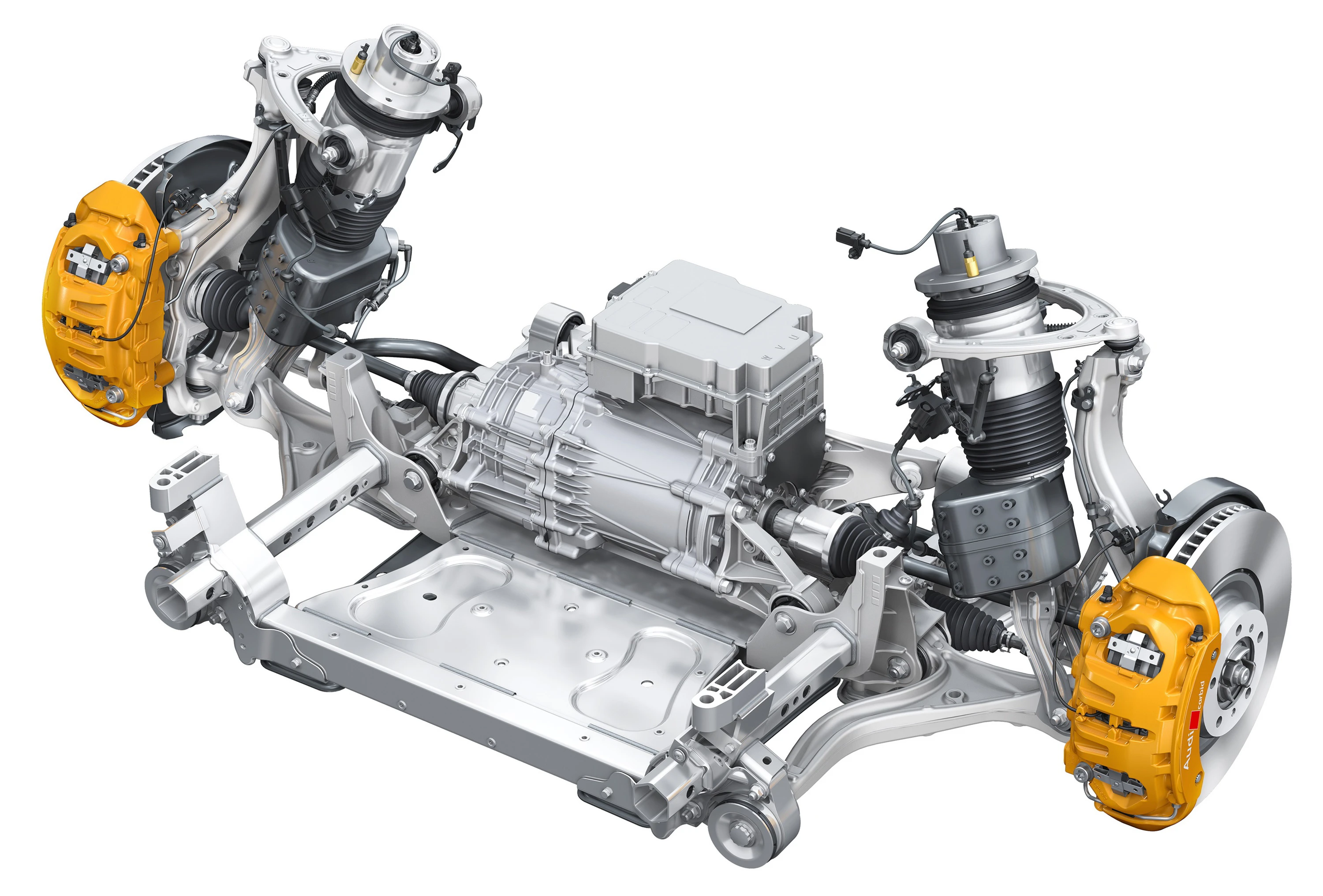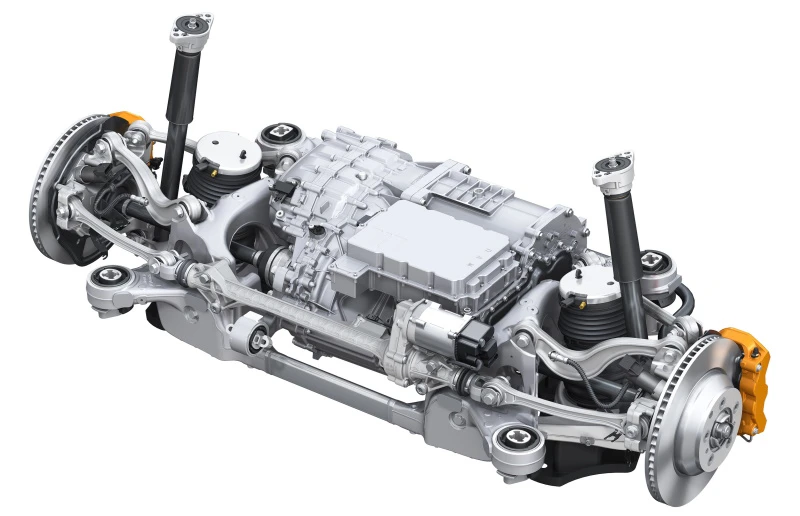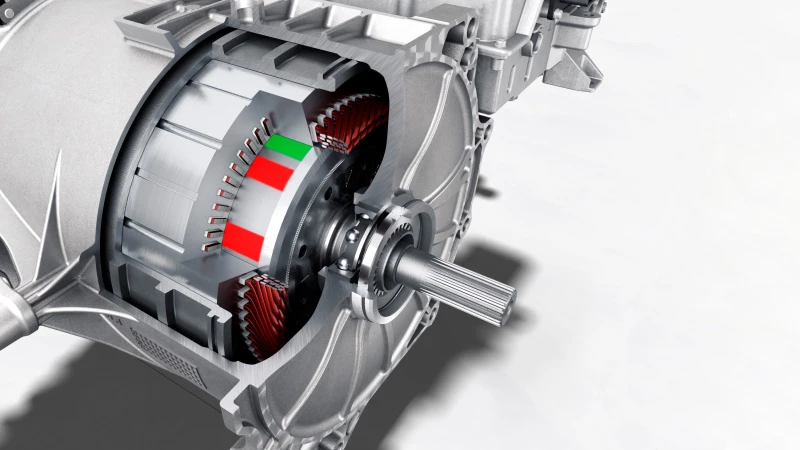Audi e-tron GT and RS e-tron GT motors
The fully electric gran turismo from Audi offers dynamic driving performance in both model variants. The e-tron GT quattro accelerates from 0 to 100 km/h (62.1 mph) in 4.1 seconds; the RS model achieves this in just 3.3 seconds.
Both values apply for boost with launch control, which the driver can access in “dynamic” mode of the Audi drive select dynamic handling system. The RS model reaches the 200 km/h (124.3 mph) mark in 10.9 seconds, and has a top speed of 250 km/h (155.3 mph). The e-tron GT quattro has a top speed of 245 km/h (152.2 mph).
In the e-tron GT quattro, the front electric motor outputs 175 kW (238 PS), and the rear motor outputs 320 kW (435 PS). Both electric motors keep reserves available for extreme driving situations, which is why the sum of their individual outputs exceeds the drive’s total output of 350 kW (476 PS) considerably. Up to 390 kW (530 PS) are available for roughly 2.5 seconds in boost mode via launch control. The total torque is 630 Nm (464.7 lb-ft). In the RS e-tron GT, the electric motor at the front axle also outputs 175 kW (238 PS), while the motor in the rear outputs 335 kW (456 PS). The total output is 440 kW (598 PS), and the total torque is 830 Nm (612.2 lb-ft). In boost mode, the output briefly increases to 475 kW (646 PS).

Front electric motor with suspension

Rear electric motor with suspension
More copper in the stator: the hairpin winding
The PSM motors (permanently excited synchronous motors) in the e-tron GT are extremely efficient, with an efficiency of considerably more than 90 percent in the majority of all driving situations. They are produced with a complex technology known as hairpin winding. The coils of the stator consist of rectangular copper wires that look similar to hairpins after they have been bent. This allows the wires to be packed more tightly, as a result of which considerably more copper fits into the stator as compared to the conventional round winding. This increases the output and torque and makes the cooling of the electric motors, which takes place via a separate medium-temperature circuit, more efficient.

Audi e-tron GT electric motor with hairpin winding
The electric motor, the power electronics, and the transmission form a compact block on both axles. The front motor is installed coaxially and has a ratio of 8.1:1. The rear electric motor is installed parallel to the axles and sends its torque to a two-speed transmission with three shafts. The second gear (ratio of 8.2:1) provides excellent efficiency and also large amounts of reserve power. The first gear, which has a very short ratio of 15.6:1, ensures spirited acceleration right from the start, if the driver so desires. If the driver decides against this, the car moves off in first gear. The driver generally does not need to press a start button to drive off and can just depress the brake pedal and engage the “D” or “R” gear. As soon as they take their foot off the brake pedal, the car starts to roll at low speed.
The new generation of quattro: the electric all-wheel drive
The electric all-wheel drive in the e-tron GT quattroand RS e-tron GT regulates the drive torque distribution between the axles – continuously, fully variably, and within a few thousandths of a second. The electric gran turismo thus offers powerful dynamism and optimum traction in any weather conditions. The quattro principle of the four-wheel drive that Audi introduced to the market more than 40 years ago presents itself on a new, fascinating technological level.
When the e-tron GT is being driven in the “comfort” mode of Audi drive select, both electric motors work together in the most energy-conserving way possible. In “dynamic” mode, its character is more rear-heavy, while “efficiency” mode clearly prioritizes front-wheel drive. With a slippery road surface, high power requirements, or fast cornering, more torque can be distributed to the rear wheels – and around five times faster than with a mechanical quattro drivetrain.
Efficiency takes priority: coasting or recuperation
When the driver releases the right-hand pedal, the drive of the e-tron GT generally switches to coasting. This strategy prevents the losses associated with every conversion of energy. The large gran turismo glides calmly and efficiently while its electric motors run along virtually deenergized. Coasting recuperation takes place at the front electric motor and only in the “dynamic” mode of Audi drive select.
Regardless of the driving mode, the driver can use the rocker switches on the steering wheel to adjust two manual recuperation levels of different strengths. They can select an automatic level in the MMI system, where the rocker switches are non-functional. In this case, the predictive efficiency assist regulates coasting and recuperation on the basis of data which is obtains from the navigation system and the onboard sensors. For example, when the car is approaching a roundabout or a slower car driving in front, the drive management system attempts to reduce the speed by coasting. If the available distance is too short, it switches to recuperation. In this case, maximum deceleration is slightly higher than in the manual recuperation levels, reaching up to 0.13 g.
Brake recuperation: output of up to 265 kW
While braking, the electric motors perform decelerations alone up to around 0.3 g, i.e. the vast majority of all brake applications in everyday driving. The hydraulic wheel brakes are activated only when the driver brakes very heavily. The transition is almost unnoticeable, and recuperation remains active almost up to a standstill. If both electric motors are involved in brake recuperation in order to ensure handling stability, they can recover up to 265 kW of power. In all driving situations – be it full acceleration, dynamic handling, coasting or brake recuperation – the gran turismo remains unshakably stable because its control systems for brakes, suspension, drive, and power electronics are closely connected and work together quickly.